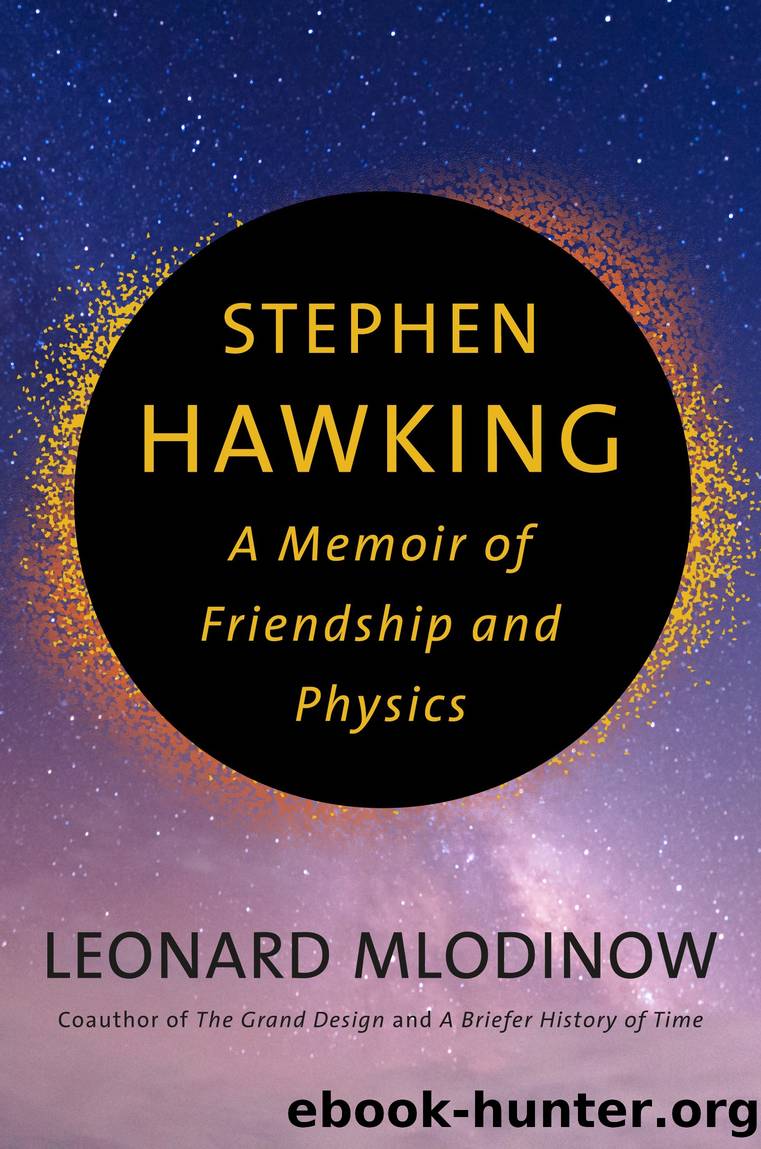Stephen Hawking by Leonard Mlodinow

Author:Leonard Mlodinow [Mlodinow, Leonard]
Language: eng
Format: epub
Publisher: Knopf Doubleday Publishing Group
Published: 2020-09-08T00:00:00+00:00
* * *
The road to Hawking radiation went through Moscow. Stephen landed there in September 1973, when he and Jane accompanied Kip there with the goal of meeting some brilliant Russian physicists whose freedom to travel had been restricted by the Soviet government, either because they were dissidents or because they were Jewish. The physicists couldn’t visit Stephen in Cambridge, but they did make the pilgrimage to Stephen’s two-room suite at the Rossiya Hotel, off Red Square. On one of these visits, Stephen learned of a peculiar conjecture made by his host Yakov Zel’dovich.
When a person dies and is cremated, whether that person was fat or thin, tall or short, beautiful or unattractive, kind or evil, ignorant or educated, his or her body is reduced to a pile of carbon ash. People are individuals, but carbon is carbon. All that might distinguish the remains of a fat king from that of a slim ballet dancer is the mass of that pile. Stars greater than a certain size meet an analogous fate.*1
When a massive star dies, when it implodes to form a black hole, virtually all traces of its former identity are lost. The elements and particles it was made of, the state of the turbulent plasma within it, the layers of structure it had developed, all vanish from existence. After its collapse, all that remains of the star’s past individuality are the values of the three parameters that are the only traits a black hole may possess: mass, spin, and electric charge.
Much of the popular lore about black holes, and a lot of the work in black hole physics, focuses on the simplest black holes, those with zero charge and spin. The only characteristic those black holes possess is mass. But Zel’dovich’s speculation concerned spinning black holes. He proposed what was then an odd idea—that spinning black holes should radiate energy.
According to Zel’dovich, the radiated energy would be drawn from the black hole’s spin. Over time, the radiation would drain that spin energy and the black hole would spin more slowly, until it eventually stopped both spinning and radiating.
Unlike Bekenstein’s theory, the idea that a spinning black hole would radiate energy was not revolutionary, because the energy radiated would be drawn from the black hole’s spin and not from its mass. A spinning black hole could maintain its mass and still radiate. It wouldn’t have to shrink and eventually disappear in the process.
Zel’dovich published his ideas, but his argument was complicated and involved some questionable mathematics. His paper had been ignored and largely forgotten. In that room off Red Square, however, Zel’dovich explained his theory to Stephen, who was intrigued. Zel’dovich’s analysis depended upon the laws of both gravity and quantum theory. Ideally, he would have used a theory of quantum gravity to conduct the work, but since there was no such thing, he attempted to carefully employ elements from both general relativity (for the gravity aspect) and elementary particle physics (for the quantum aspect). Stephen was skeptical
Download
This site does not store any files on its server. We only index and link to content provided by other sites. Please contact the content providers to delete copyright contents if any and email us, we'll remove relevant links or contents immediately.
Tools of Titans by Timothy Ferriss(7810)
Turbulence by E. J. Noyes(7700)
Astrophysics for People in a Hurry by Neil DeGrasse Tyson(5000)
Secrets of Antigravity Propulsion: Tesla, UFOs, and Classified Aerospace Technology by Ph.D. Paul A. Laviolette(4990)
Design of Trajectory Optimization Approach for Space Maneuver Vehicle Skip Entry Problems by Runqi Chai & Al Savvaris & Antonios Tsourdos & Senchun Chai(4839)
Room 212 by Kate Stewart(4732)
Pale Blue Dot by Carl Sagan(4613)
The David Icke Guide to the Global Conspiracy (and how to end it) by David Icke(4377)
A Journey Through Divination and Astronomy by Publishing Pottermore(4248)
Apollo 8 by Jeffrey Kluger(3512)
Goodbye Paradise(3444)
Losing the Nobel Prize by Brian Keating(3425)
COSMOS by Carl Sagan(3346)
The Five People You Meet in Heaven by Mitch Albom(3334)
How to Read Water: Clues and Patterns from Puddles to the Sea (Natural Navigation) by Tristan Gooley(3239)
Brief Answers to the Big Questions by Stephen Hawking(3239)
How to Read Nature by Tristan Gooley(3077)
The Order of Time by Carlo Rovelli(3073)
A Brief History of Time by Stephen Hawking(2819)
